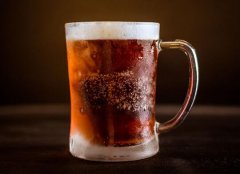本篇文章給大家談?wù)劇丁穼?duì)應(yīng)的知識(shí)點(diǎn),希望對(duì)各位有所幫助。
本文目錄一覽:
托福閱讀資料:為什么要搭圣誕樹吃拐杖糖
Did Coca-Cola invent the modern-day Santa?
可口可樂(lè)公司創(chuàng)造了現(xiàn)代的圣誕老人形象?
Nope, this one's a myth. Although Coca-Cola started using Santa in their advertising in the 1930s, the company didn't come up with the image of the plump old man in his signature red and white. It just so happened that Santa's red suit and white beard matched the brand's colors.
不,這只是一個(gè)誤傳。雖然可口可樂(lè)公司在上世紀(jì)30年代開始在廣告中使用圣誕老人的形象,但身穿標(biāo)志性紅白相間服裝的胖胖的圣誕老人的形象并不是該公司想出的,只不過(guò)碰巧圣誕老人的紅衣服和白胡須顏色和可口可樂(lè)品牌外觀設(shè)計(jì)顏色相同。
The modern-day image of Santa has been evolving for centuries. Modeled after Saint Nicholas who had a reputation for secret gift-giving, Santa was eventually shaped into the sleigh-riding, chimney-climbing man we know today, through the work of people like Washington Irving and illustrator Thomas Nast.
現(xiàn)代圣誕老人的形象幾世紀(jì)以來(lái)不斷演變。圣誕老人以喜歡匿名贈(zèng)送禮物的圣?尼古拉斯(土耳其歷史上真實(shí)存在的一位主教)為原型,經(jīng)過(guò)作家華盛頓?歐文和漫畫家托馬斯?納斯特的描繪,最終演變成如今這位乘雪橇、爬煙囪的老人形象。
Nast's 1881 "Merry Old Santa Claus" largely formed the basis for today's Santa. In that image, Santa appears in the classic red and white suit with a big belly to boot.
納斯特1881年的作品《圣誕老人快樂(lè)》基本奠定了如今圣誕老人形象的基礎(chǔ)。在這幅作品里,圣誕老人身穿經(jīng)典的紅白相間的衣服,還挺著大肚腩。
Where do candy canes come from?
拐杖糖是怎么來(lái)的?
This is one of those traditions that we're not too sure about. One story goes that a German choirmaster in 1670 was worried about children being disruptive during long church services, so he went to a candy maker for sticks of white sugar to keep them quiet. To give the candy an educational slant, the choirmaster asked the candy maker to make the sticks in the shape of a cane so that the kids would remember the story of the shepherds who came to visit baby Jesus. However, all the references to this story are anecdotal and there are no real records to prove it's actually true.
這是一個(gè)我們不太確定來(lái)源的圣誕習(xí)俗。有說(shuō)法認(rèn)為,1670年德國(guó)一位唱詩(shī)班指揮擔(dān)心孩子們?cè)诮烫枚Y拜時(shí)惹麻煩,因此讓糖果制造商制作了白糖棒來(lái)安撫孩子。為了讓糖果有教育意義,這位指揮讓糖果制造商把糖棒制成拐杖狀,以便讓孩子們記住來(lái)看望小耶穌的“好牧人”的故事。但這只是一則趣聞?shì)W事,沒(méi)有真實(shí)的記載來(lái)證實(shí)。
What we do know is that in 1919, Bob McCormack started making candy canes in Georgia and eventually became one of the world's leading candy cane producers. Since manually shaping candy canes into their traditional 'J' shape was inefficient and labor-intensive, McCormack's brother-in-law, a Catholic priest named Gregory Keller, invented the Keller Machine to automate the process of shaping straight candy sticks into today's J-shaped candy canes.
我們明確知道的是,在1919年,美國(guó)喬治亞州的鮑勃?麥科馬克開始制作拐杖糖,他所經(jīng)營(yíng)的公司最終成為全球最大的拐杖糖生產(chǎn)商之一。由于人工把拐杖糖打造成傳統(tǒng)的J型費(fèi)時(shí)費(fèi)力,麥科馬克的妹夫、天主教牧師格雷戈里?凱勒發(fā)明了凱勒機(jī)器,能夠?qū)⒅碧枪糇詣?dòng)變成彎曲的拐杖糖。
Why do we drink eggnog?
為什么圣誕喝蛋酒?
Most culinary historians agree that eggnog stems from a medieval British drink called "posset," a thick, boozy, ale-like concoction seasoned with whatever spices were on hand. As the milk, eggs and sherry used to make posset were foods of the rich, the drink was used in toasts to prosperity and good health.
大多數(shù)美食歷史學(xué)家都認(rèn)為蛋酒來(lái)自英國(guó)中世紀(jì)一種名為“牛奶甜酒”的飲品,這種甜酒味道醇厚,酒香濃郁,是一種類似于麥芽酒的調(diào)制飲品,可以按自己的需求添加多種調(diào)味料。用于制作牛奶甜酒的牛奶、雞蛋和雪利酒在當(dāng)時(shí)只有有錢人才買得起,因此牛奶甜酒用來(lái)祝愿人們富足健康。
Eggnog became a holiday tradition when it was brought over to the American colonies, where cows, chickens and rum were much more accessible. As for the name? The term "nog" referred to a certain type of strong, English beer, while a "noggin" was a small cup intended for brewing nog.
蛋酒被帶到美洲殖民地之后,成為一種假日習(xí)俗。在美洲,奶牛、雞和朗姆酒更加普遍。至于名字?“nog”指的是一種強(qiáng)勁的英國(guó)啤酒,而“noggin”指的是用于釀造nog的小杯子。
Why do we put up Christmas trees?
為什么要搭圣誕樹?
There are a few different stories behind the origin of the modern-day Christmas tree, although not all are rooted in fact. Evergreen trees were actually used by pagans in winter festivals for thousands of years. During the winter solstice, evergreens signified the coming of spring. As Christianity spread throughout Europe, the trees began to be used as a symbol for Christmas. In mystery plays in Germany, they were often used as props, garnished with apples to represent the Garden of Eden.
現(xiàn)今圣誕樹的起源有多個(gè)版本,但并非都有事實(shí)依據(jù)。其實(shí)異教徒在冬季的節(jié)日中使用常青樹已經(jīng)有幾千年歷史了。在冬至,常青樹象征著春季的來(lái)臨。由于基督教傳遍歐洲,常青樹開始象征圣誕節(jié)。在德國(guó)的神秘劇中,常青樹經(jīng)常用作小道具,裝飾著代表伊甸園的蘋果。
One legend credits 16th century Protestant reformer Martin Luther for bringing the Christmas tree into homes. Luther was supposedly walking through the forest on the night before Christmas when he looked up to see stars shining through the tree branches. He was so dazzled by the sight that he told his children it reminded him of Jesus and then erected a tree in his own home.
有傳說(shuō)認(rèn)為,16世紀(jì)的新教改革者馬丁?路德把圣誕樹傳統(tǒng)帶入眾多家庭。據(jù)說(shuō)圣誕節(jié)前夜他穿過(guò)森林,抬頭看見(jiàn)星光穿過(guò)樹枝。他被這一美景震撼,告訴孩子們這讓他想起了耶穌,于是在自己家搭了一棵圣誕樹。
But it wasn't until the mid-19th century that the Christmas tree as we now know it became custom. England's Queen Victoria encouraged her husband Prince Albert to decorate a tree as he had back at home in what is now Germany. When a drawing of the royal family with their exquisite Christmas tree appeared in a London newspaper, the tradition became popular throughout the UK and US.
但直到19世紀(jì)中期,搭圣誕樹才成為一種習(xí)俗。英國(guó)維多利亞女王鼓勵(lì)丈夫阿爾伯特按照他原來(lái)家中(今德國(guó)境內(nèi))的樣子裝飾了一棵圣誕樹。一家倫敦報(bào)紙刊登了英國(guó)王室與裝飾精美的圣誕樹在一起的畫像之后,這一習(xí)俗在英國(guó)和美國(guó)流行起來(lái)。
Why do we hang wreaths on our doors?
為什么在門上掛圣誕花環(huán)?
In ancient Rome, people would exchange evergreen branches during New Year's celebrations to wish each other good health. The Romans eventually began bending these branches into a ring and displaying them on doorways, which symbolized both victory and eternal life.
在古羅馬,人們?cè)谛履陸c祝時(shí)交換常青樹樹枝,互祝健康。后來(lái)羅馬人把樹枝編成花環(huán)掛在門口,象征勝利和永生。
The wreath later became a Christian symbol for the body of Christ. In holly wreaths, the sharp, pointed leaves represented the crown of thorns worn by Jesus on the cross and the small, red berries symbolized drops of blood. Evergreen wreaths embodied eternal life. For some Christians, hanging a wreath in the doorway has been an invitation for Christ to enter one's home. But today, people mostly hang wreaths on their doors because they're festive, pretty and well, because it's tradition.
之后,花環(huán)成為基督教會(huì)的象征。冬青花環(huán)上的尖樹葉代表耶穌臨刑前佩戴的荊棘王冠,而小小的紅漿果象征血滴。常青花環(huán)象征永生。對(duì)一些基督教徒來(lái)說(shuō),在門口掛花環(huán)意思是邀請(qǐng)基督登門造訪。但如今,人們?cè)陂T上掛花環(huán)大多是因?yàn)榛ōh(huán)很喜慶很漂亮,因?yàn)檫@已經(jīng)成為圣誕傳統(tǒng)。
假期旅游去哪好玩
導(dǎo)語(yǔ):權(quán)威雜志《康德納斯特旅游者》(Conde Nast Traveler)圈點(diǎn)了十座最熱情好客的美國(guó)城市,這些城市都有不少好玩的事情可做,一定會(huì)讓您盡興而歸。以下為您一一介紹(倒序)。
假期旅游去哪好玩
10. 伯靈頓(Burlington),佛蒙特州
佛蒙特州以雪景和滑雪項(xiàng)目聞名,所以如果你喜歡寒冷的天氣,伯靈頓是個(gè)理想去處:滑雪之余,可在教堂街市場(chǎng)(Church Street Marketplace)逛店,還可參觀Pine Street Art Works等公共畫廊。
9. 新奧爾良(New Orleans),路易斯安那州
說(shuō)到新奧爾良,您可能會(huì)立即想到狂歡節(jié)(Mardi Gras),其實(shí),這座城市全年都有很多好吃、好玩的。逛逛歷史悠久的法國(guó)區(qū)(The French Quarter),別忘了著名的Cafe du Monde咖啡館有法式甜甜圈(beignets)可品嘗。新奧爾良人充滿活力,為自己的城市感到自豪,他們會(huì)確保客人擁有貨真價(jià)實(shí)的'觀光體驗(yàn)。
8. 杰克遜(Jackson),懷俄明州
被蔓延山脈環(huán)繞的杰克遜,會(huì)給你帶來(lái)真正的美國(guó)邊境體驗(yàn)。小鎮(zhèn)上的自然愛(ài)好者喜歡與游客分享當(dāng)?shù)氐淖匀黄嬗^:造訪黃石國(guó)家公園和大提頓國(guó)家公園,觀看一場(chǎng)木馬騎術(shù)表演,自然是題中之義。無(wú)論游客在尋找什么,這里都可讓你心情開朗、頭腦清明。
7. 阿什維爾(Asheville),北卡羅萊納州
阿什維爾當(dāng)?shù)氐娘L(fēng)土人情,會(huì)讓你感受到美景和活潑城市氛圍的完美結(jié)合。您可以參觀喬治?W?范德比爾特(George W. Vanderbilt)的酒莊、美國(guó)最大的莊園比特摩爾莊園(Biltmore Estate),再光顧各色餐館——當(dāng)?shù)孛朗尘坝^被稱為食托邦(Foodtopia)。
6. 圣達(dá)菲(Santa Fe),新墨西哥州
美國(guó)最南部新墨西哥州的圣達(dá)菲市,以音樂(lè)、小鎮(zhèn)風(fēng)情和美食聞名。品嘗受西班牙和英國(guó)風(fēng)味影響的美食,同時(shí)了解當(dāng)?shù)氐臍v史文化。您還可以在山道上徒步旅行,或徒步游歷城市。
5. 奧斯汀(Austin),得克薩斯州
著名的德州大學(xué)奧斯汀分校坐落在此地,其吉祥物長(zhǎng)角牛頗具知名度。此外,這是和納甚維爾一樣,是體驗(yàn)現(xiàn)場(chǎng)音樂(lè)會(huì)的好地方,豐富的度假項(xiàng)目,還包括水療、搭船游覽及各種水上運(yùn)動(dòng)。
4. 薩凡納(Savannah),佐治亞州
迷人的薩凡納會(huì)給游客帶來(lái)典型的美國(guó)南方經(jīng)驗(yàn)。當(dāng)?shù)赜泻I、啤酒廠和博物館,足以填滿您的渡假行程。當(dāng)?shù)刎S富的水上運(yùn)動(dòng)也十分適合帶孩子出游的家庭。
3. 帕克城(Park City),猶他州
榜單上另一座相對(duì)寒冷的城市是帕克城。這里是2002年冬奧會(huì)主辦地,所以當(dāng)?shù)厝耸至?xí)慣迎接遠(yuǎn)方來(lái)客。這座山城的深秋美不勝收,每年1月是圣丹斯電影節(jié)(日舞影展)的舉辦地,常年還有戶外戲劇表演,以及上乘的美容服務(wù)和療養(yǎng)項(xiàng)目。
2. 查爾斯頓(Charleston),南拉羅萊納州
如果美食是你旅行的重要?jiǎng)恿Γ敲疵绹?guó)中部的美食城市查爾斯頓是您不容錯(cuò)過(guò)之地。當(dāng)?shù)夭蛷d的風(fēng)味有美式,也有愛(ài)爾蘭式,文化是同樣多元。搭乘四輪馬車環(huán)游城市,參觀著名居民區(qū)Rainbow Row,或乘一乘河船。獨(dú)特的公共運(yùn)輸工具讓您有機(jī)會(huì)與當(dāng)?shù)厝肆奶臁o(wú)論你選擇怎樣的出行方式,這座城市都會(huì)讓你行程滿滿。
1. 納什維爾(Nashville),田納西州
有音樂(lè)城(Music City)之稱的納什維爾居于好客城市榜首。豐富的餐館、現(xiàn)場(chǎng)音樂(lè)會(huì),充滿活力的夜生活,使當(dāng)?shù)芈糜味燃夙?xiàng)目呈現(xiàn)最為多樣化的風(fēng)貌,值得列為旅游首選目的地。
關(guān)于《》的介紹到此就結(jié)束了。
